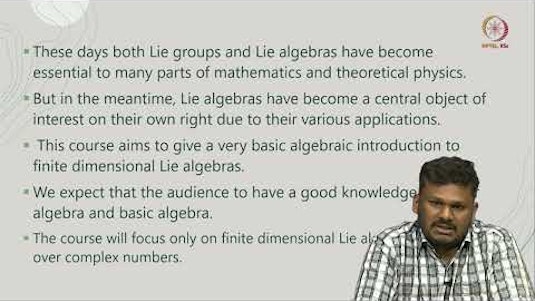
Description
STAT 414 focuses on the theory of introductory probability. The course goals are:
- To learn the theorems of basic probability.
- To learn applications and methods of basic probability.
- To develop theoretical problem-solving skills.
Tags
Syllabus
As the title of Stat 414 suggests, we will be studying the theory of probability, probability, and more probability throughout the course. Here's a (brief!) overview of what we'll do in the course:
Section 1
In Section 1, one of our primary focuses will be to develop an understanding of the various ways in which we can assign a probability to some chance event. We'll also learn the fundamental properties of probability, investigate how probability behaves, and learn how to calculate the probability of a new chance event.
Section 2
In Section 2, we'll explore discrete random variables and discrete probability distributions. The basic idea is that when certain conditions are met, we can derive formulas for calculating the probability of an event. Then, instead of returning to the basic probability rules we learned in Section 1 to calculate the probability of an event, we can use the new formulas we derived, provided that the certain conditions are met.
Section 3
In Section 3, as the title suggests, we will investigate probability distributions of continuous random variables, that is, random variables whose possible outcomes fall on an infinite interval. It's in this section that you'll want to make sure your calculus skills of integration and differentiation are sufficient before tackling many of the problems you'll encounter.
Section 4
In Section 4, we'll extend many of the definitions and concepts that we learned in Sections 2 and 3 to the case in which we have two random variables. More specifically, we will:
- extend the definition of a probability distribution of one random variable to the joint probability distribution of two random variables,
- learn how to use the correlation coefficient as a way of quantifying the extent to which two random variables are linearly related,
- extend the definition of the conditional probability of events in order to find the conditional probability distribution of one random variable given that another that has occurred, and
- investigate a particular joint probability distribution, namely the bivariate normal distribution.
Section 5
Finally, in Section 5, as the name of this section suggests, we will spend some time learning how to find the probability distribution of functions of random variables. For example, we might know the probability density function of X, but want to know instead the probability density function of X2. We'll learn several different techniques for finding the distribution of functions of random variables, including the distribution function technique, the change-of-variable technique and the moment-generating function technique. The more important functions of random variables that we'll explore will be those involving random variables that are independent and identically distributed.

STAT 414: Introduction to Probability Theory
-
TypeOnline Courses
-
ProviderOPEN.ED@PSU
STAT 414 focuses on the theory of introductory probability. The course goals are:
- To learn the theorems of basic probability.
- To learn applications and methods of basic probability.
- To develop theoretical problem-solving skills.
As the title of Stat 414 suggests, we will be studying the theory of probability, probability, and more probability throughout the course. Here's a (brief!) overview of what we'll do in the course:
Section 1
In Section 1, one of our primary focuses will be to develop an understanding of the various ways in which we can assign a probability to some chance event. We'll also learn the fundamental properties of probability, investigate how probability behaves, and learn how to calculate the probability of a new chance event.
Section 2
In Section 2, we'll explore discrete random variables and discrete probability distributions. The basic idea is that when certain conditions are met, we can derive formulas for calculating the probability of an event. Then, instead of returning to the basic probability rules we learned in Section 1 to calculate the probability of an event, we can use the new formulas we derived, provided that the certain conditions are met.
Section 3
In Section 3, as the title suggests, we will investigate probability distributions of continuous random variables, that is, random variables whose possible outcomes fall on an infinite interval. It's in this section that you'll want to make sure your calculus skills of integration and differentiation are sufficient before tackling many of the problems you'll encounter.
Section 4
In Section 4, we'll extend many of the definitions and concepts that we learned in Sections 2 and 3 to the case in which we have two random variables. More specifically, we will:
- extend the definition of a probability distribution of one random variable to the joint probability distribution of two random variables,
- learn how to use the correlation coefficient as a way of quantifying the extent to which two random variables are linearly related,
- extend the definition of the conditional probability of events in order to find the conditional probability distribution of one random variable given that another that has occurred, and
- investigate a particular joint probability distribution, namely the bivariate normal distribution.
Section 5
Finally, in Section 5, as the name of this section suggests, we will spend some time learning how to find the probability distribution of functions of random variables. For example, we might know the probability density function of X, but want to know instead the probability density function of X2. We'll learn several different techniques for finding the distribution of functions of random variables, including the distribution function technique, the change-of-variable technique and the moment-generating function technique. The more important functions of random variables that we'll explore will be those involving random variables that are independent and identically distributed.
Related Courses


Geometría Analítica Preuniversitaria

Bayesian statistics

Basic Real Analysis

Introduction to Lie algebras

A-level Mathematics for Year 13 - Course 2: General Motion, Moments and Equilibrium, The Normal Distribution, Vectors, Differentiation Methods, Integration Methods and Differential Equations

Introduction to Statistics & Data Analysis in Public Health

Fundamental Linear Algebra Concepts with Python

Bayesian Inference with MCMC

Statistics in Psychological Research

Statistics Fundamentals


 Online Courses
Online Courses  OPEN.ED@PSU
OPEN.ED@PSU
